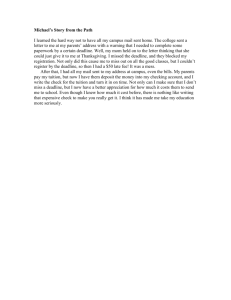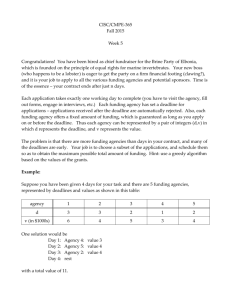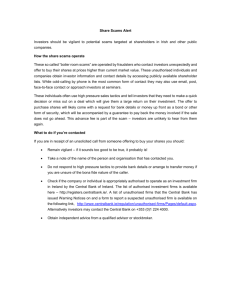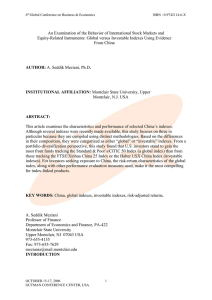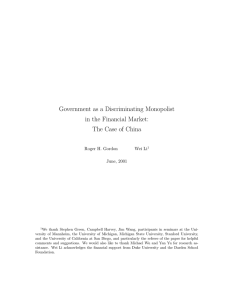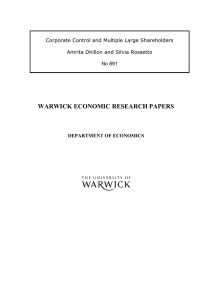UNIVERSITY OF OSLO DEPARTMENT OF ECONOMICS
advertisement
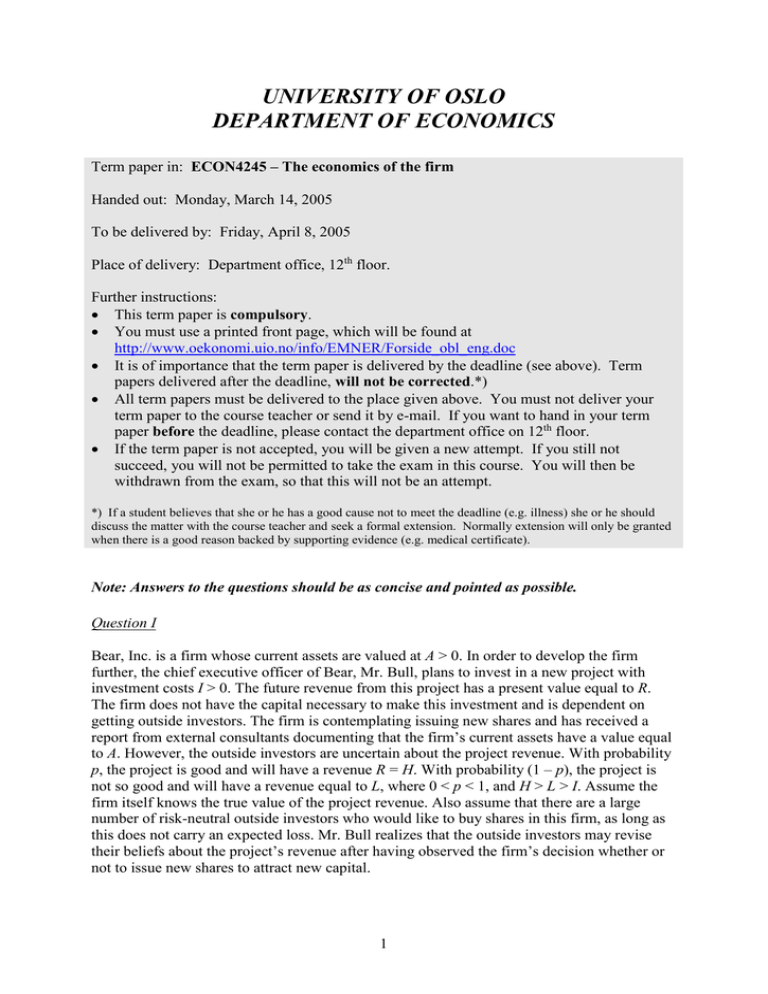
UNIVERSITY OF OSLO DEPARTMENT OF ECONOMICS Term paper in: ECON4245 – The economics of the firm Handed out: Monday, March 14, 2005 To be delivered by: Friday, April 8, 2005 Place of delivery: Department office, 12th floor. Further instructions: This term paper is compulsory. You must use a printed front page, which will be found at http://www.oekonomi.uio.no/info/EMNER/Forside_obl_eng.doc It is of importance that the term paper is delivered by the deadline (see above). Term papers delivered after the deadline, will not be corrected.*) All term papers must be delivered to the place given above. You must not deliver your term paper to the course teacher or send it by e-mail. If you want to hand in your term paper before the deadline, please contact the department office on 12th floor. If the term paper is not accepted, you will be given a new attempt. If you still not succeed, you will not be permitted to take the exam in this course. You will then be withdrawn from the exam, so that this will not be an attempt. *) If a student believes that she or he has a good cause not to meet the deadline (e.g. illness) she or he should discuss the matter with the course teacher and seek a formal extension. Normally extension will only be granted when there is a good reason backed by supporting evidence (e.g. medical certificate). Note: Answers to the questions should be as concise and pointed as possible. Question I Bear, Inc. is a firm whose current assets are valued at A > 0. In order to develop the firm further, the chief executive officer of Bear, Mr. Bull, plans to invest in a new project with investment costs I > 0. The future revenue from this project has a present value equal to R. The firm does not have the capital necessary to make this investment and is dependent on getting outside investors. The firm is contemplating issuing new shares and has received a report from external consultants documenting that the firm’s current assets have a value equal to A. However, the outside investors are uncertain about the project revenue. With probability p, the project is good and will have a revenue R = H. With probability (1 – p), the project is not so good and will have a revenue equal to L, where 0 < p < 1, and H > L > I. Assume the firm itself knows the true value of the project revenue. Also assume that there are a large number of risk-neutral outside investors who would like to buy shares in this firm, as long as this does not carry an expected loss. Mr. Bull realizes that the outside investors may revise their beliefs about the project’s revenue after having observed the firm’s decision whether or not to issue new shares to attract new capital. 1 (i) Discuss what the firm will do in this situation. Discuss, in particular, whether it may choose not to invest in the project despite it having a positive net present value. (ii) Explain what is meant by “money burning” in relation to financing of a firm in situations with asymmetric information. Discuss whether there is a scope for Bear, Inc., to use money-burning in order to attract equity capital. Question II Give one or two examples of contractual incompleteness and discuss how the incompleteness of contracts, perhaps together with the relationship-specificity of any investments made, affect the outcome in these examples. (Try, if possible, to find other examples than those given in the book, in lectures, or in seminars.) 2


